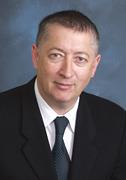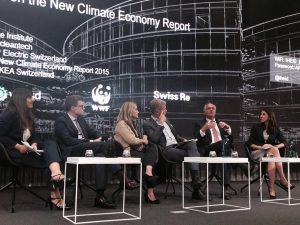Retrospective 2009 program “Enjoy Yourself (It’s Later Than You Think)” and two new interviews. MD Paul David Blanc on his new book “Fake Silk, the Lethal History of Viscose Rayon”. Plus, as billions head into unprepared cities, Ipek Gencsu on a report from the Global Commission on the Economy and Climate. Radio Ecoshock 161228
First, we’ll be joined by a medical doctor who asks a simple question: should we wear clothes that endanger the lives of the people who make them? Watch out for viscose, whether it’s Rayon, cellophane or the common dish sponge. The chemicals used to make them may have driven workers crazy. It’s just another journey into the underworld of the toxic society.
I’m Alex. Welcome to Radio Ecoshock.
Download or listen to this Radio Ecoshock show in CD Quality or Lo-Fi
LETHAL CLOTHING FROM VISCOSE/RAYON – DR. PAUL DAVID BLANC
Now and then, just one dedicated person can put the spotlight on a dangerous chemical. Every day, some of us wear or use the products made with this toxic process. Few people know fabrics like Rayon are made from forests boiled down by dangerous chemicals. So are cellophane and dish sponges.
That person could be Dr. Paul David Blanc. He’s a real doctor and a professor of medicine at the University of California, in San Francisco. The story and the warning come in Paul’s new book “Fake Silk, The Lethal History of Viscose Rayon“.

Dr. Paul David Blanc
Download or listen to this 20 minute interview with Paul David Blanc in CD Quality
As I’m quite sick with a cold today, I’m just going to reproduce this information from the publisher, which took me into this issue:
“The current “greenwashing” of viscose products as being eco-friendly (rayon fabrics, sponges, cellophane products) is exposed in FAKE SILK: The Lethal History of Viscose Rayon by Paul D. Blanc, M.D. (Yale University Press).
A highly toxic chemical, carbon disulfide, has been the life blood of this industry from the start. It also has meant a death sentence for many of its workers. For a more than a century, making viscose has been linked to severe illness, including mental derangement, heart attack, and stroke.
• The popular Modal line of viscose fabric claims to be so environmentally responsible that the company’s production process is “as pure as the Edelweiss flower,” using “renewable and natural raw material.” Of course, they’re referring to the wood pulp, not the deadly carbon disulfide.
• Bamboo-based fibers and SeaCell rayon (made with the addition of pulverized seaweed) are pitched to environmentally conscious shoppers without any mention of the harsh chemicals required in their manufacture.
• Cellulose–based sponges are marketed for “eco-friendly cleaning,” as an alternative to the endangered, over-hunted sea sponge. The cellulose comes from wood pulp (the trees stewarded responsibly, of course), however they completely neglect to mention the dangerous chemicals used in the manufacturing process.
• Natureflex, a new brand of cellophane, is being marketed as biodegradable and favored by organic food sellers. The company only uses certified renewable wood pulp, but neglects to mention it’s also manufactured through the toxic viscose process.
So the “rayon is green” and “cellophane is biodegradable” campaigns really say as long as the final product is safe for the consumer, it’s irrelevant that the manufacturing process is extremely hazardous.”
As Dr. Blanc reminds us in our Radio Ecoshock conversation, the question comes down to: is it OK to buy and wear clothes which are not toxic or dangerous to ME, but were deadly or damaging to make? We can think of the textile workers burned in a locked factory in Bangladesh. And now we have to consider the workers, often with poor or unenforced safety standards, who can either die young or go insane for their jobs, making our snappy clothes.
As an aside, while researching for this interview, it turns out an astounding “56.9% of the total fibers found in deep ocean areas” is rayon! The source for that statistic is here:
“Abundance of Microplastics in the World’s Deep Seas” (2014-12-16).
There some better ways to control the risk of carbon disulfide. In the book, Dr. Blanc describes the modern production facilities of the Lenzing Group in Austria. The areas containing carbon disulfide are carefully enclosed and vented, for worker protection.
It didn’t surprise me to discover in this book that former rayon factories became toxic waste dumps, known in America as Superfund sites. Most of the toxic rayon production facilities moves from the Northern United States and Britain, to the lower taxes of the American south, and then to Asia. Given the horrible effects of workers, maybe Donald Trump won’t want to bring these jobs back.
The cellophane makers and dish sponge plants in the United States and Europe continue to use this lethal chemical.
AND THEN THERE’S THE ENDANGERED FORESTS TORN DOWN TO BOIL FOR FASHION CLOTHING…
Here’s another issue with Rayon/viscose that goes beyond the medical doctor. Paul and I didn’t discuss this, but I happen to know. Toxins and worker’s rights are not the only problem with viscose/rayon fabric.
Every year, between 70 and 120 million trees are cut down to make rayon, viscose, modal and other trademarked textiles.
Ancient forests are logged, rare ecosystems leveled, forest-dependent communities affected – and the forest homes of threatened and endangered species such as orangutans, tigers, elephants, bears and wolves are hauled off to make t-shirts and suit jacket linings.
Fortunately, efforts are underway to reverse this trend. In 2013, the environmental group Canopy launched a campaign to change the course of the fashion industry.
Now several of the world’s largest clothing brands and iconic designers have committed to end all fiber sourcing from the world’s ancient and endangered forests in 2017.
H&M, Zara/Inditex, Stella McCartney, Marks and Spencer, Levi Strauss and other global retailers and designers have signed on to CanopyStyle. Over 85 brands and several of the world’s largest viscose producers are on-board. But there’s more work to be done.
Learn more at canopyplanet.org
IPEK GENCSU – CAN WE REALLY PLAN FOR A “SUSTAINABLE” WORLD?
There are still the optimists who work to persuade world governments to start aiming for a sustainable world. Let’s hear what they think.
More than a few scientists on Radio Ecoshock tell us our present economy threatens to kill us, and take out many other species in the Sixth Great Mass Extinction. Surely, we all have an interest in a new climate economy.
That’s a huge global task. I’ve come across a report that seems written in a bland code for top government and corporate planners. But there are gems buried in this work, titled “The Sustainable Infrastructure Imperative.” It’s the 2016 report from something called “the Global Commission on the Economy and Climate”. Their web site is newclimateeconomy.net.
“The Sustainable Infrastructure Imperative” (2016 report from the Global Commission on the Economy and Climate)
The Global Commission on the Economy and Climate was commissioned by seven countries – Colombia, Ethiopia, Indonesia, Norway, South Korea, Sweden and the United Kingdom – as an independent initiative to report to the international community.
To help us sort out who that is, and what this report can tell us, as citizens of this planet, I’ve called on Ipek Gencsu. She’s the Research and Engagement Manager at the New Climate Economy. Ipek has degrees in politics and economy from the London School of Economics. You may also have heard about her as a campaigner for the charity Oxfam, and for climate and food justice.

Download or listen to this 25 minute interview with Ipek Gencsu in CD Quality or Lo-Fi
END WRAP
We head on out with more clips from my 2009 Radio Ecoshock show. And please don’t forget, you can download all ten years of Radio Ecoshock shows free, courtesy of Radio Ecoshock listeners. There’s a wealth of great science, authors and activists whose voices are still worth hearing. Feel free to load up your phone, Ipad, or whatever with those mp3 files, to listen and learn.
I’m Alex Smith, saying thanks for listening, and caring about your world.
Why can’t we see other peoples responses any more?… I learn a lot from that. I am going to listen to this show again… especially the second half… about “sustainable infrastructure”…. to me, that is an oxymoron… I do not see how having ANOTHER massive build up of infrastructure, is going to solve a damn thing… one reason for the current, Sixth Mass Extinction, is because of invasion of humans on the habitat of other species… So, how is this going to help us or the planet in general?… and when she brings up how other people in less developed countries, do not have the basics of say, running water, electricity etc… that the developed world has… so it wouldn’t be fair for them NOT to get it… well, okay, yes, the basics… not massive stadiums, casinos, ….. get it?… AND… we should GIVE UP MUCH OF THAT RIDICULOUSNESS ourselves… JUST STOP USING IT ALL…. AND… I would like to know what to hell we are going to do about flying?…
She doesn’t seem to address how MINING for ALL THAT RAW MATERIAL for massive infrastructure is going to help anything… more co2 just in doing THAT… and any efficiency in fuel use.. and less fuel use.. is going to be off set to some degree… by POPULATION GROWTH….
… also, how does food grown in the agricultural areas… get to the inner parts of these massive cities?… Sure, the idea of “urban gardens is a quaint idea… but, I for one, would NOT want to be STRANDED in the middle of one of these, NATURELESS hell holes… because, if you ask me, that is what they will be… and already are….
I think the problem is that those with money and power, keep thinking the world still needs to run on money and power…. it could be different… as we lived for thousands and thousands of years… with out fossil fuels… and with out money… but, no one wants to try to work on that idea… of course.. because those with the billions and millions… would have to live more like the rest of us…. she kept saying that word, like “oh, that unrealistic”, or “in a perfect world”… I think she is the unrealistic one… and… she was way too matter of fact for me…